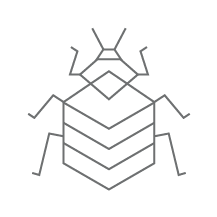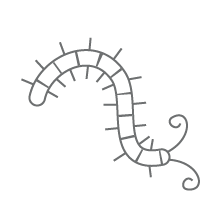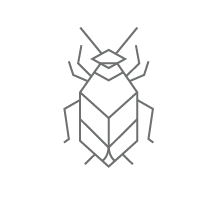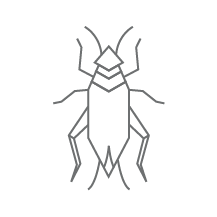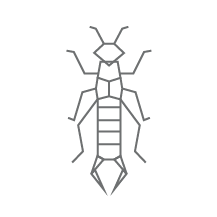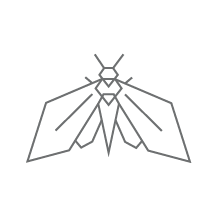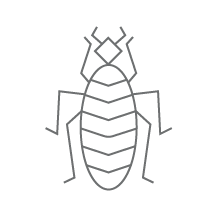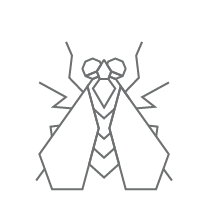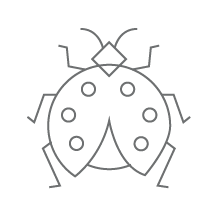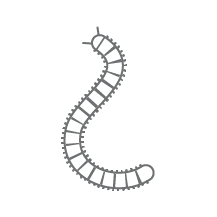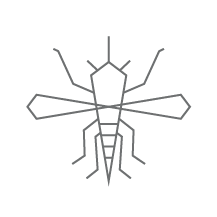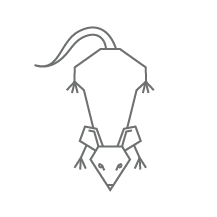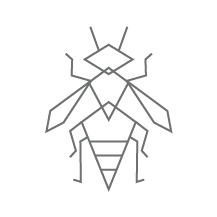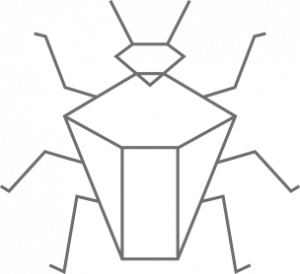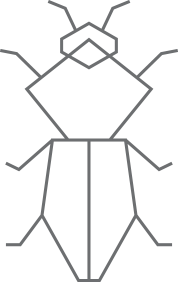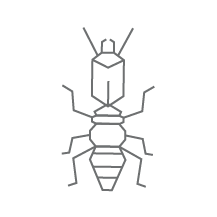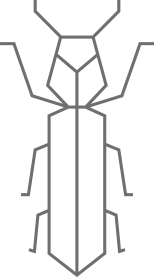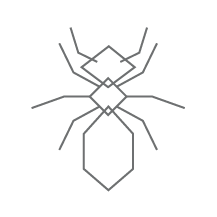
Commercial and Residential Pest Control Services | Dodson Bros. Exterminating Co., Inc.
Carpet Beetles
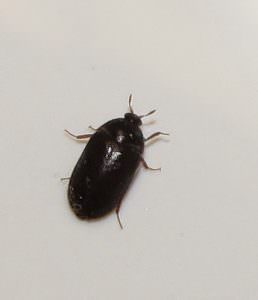
Adult carpet beetles feed on pollen and nectar outdoors. The larvae may eat seeds, animal food and other milled products in the pantry or kitchen. Although adult carpet beetles can thrive inside or outside, females prefer to lay eggs where larval food sources are abundant.
The carpet beetle is considered a general feeder but economic damage primarily occurs on fabrics in the household. It is the larval stage that causes damage. They are known to eat large, irregular holes through any acceptable food material. They prefer to feed on the surface of wool products or at the base of furs leaving bare spots on the hide. Textiles, carpets and fabrics will be peppered with irregular holes, while museum specimens will be eaten away, often leaving a fine dust around or beneath the specimen. Additionally, carpet beetles may be a pest of stored products when it invades containers of cereals, nuts and stored grain. Furthermore, those in close association with carpet beetles may suffer allergic reactions as a result of exposure to beetle fragments, cast skins or dust.
The key to controlling carpet beetles is to find the primary source(s) of infestation and eliminate it/them. Check carpeting, drapes, clothing, furs, fabric-covered furniture and stored products. As with moths, to avoid varied carpet beetle infestations, store clothing in plastic containers. Dry clean clothing thoroughly before storing for long periods of time.
Casemaking Clothes Moths
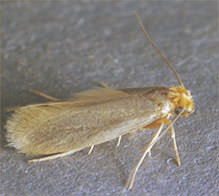
The larvae primarily attack materials of animal origin and secondarily attack those of plant origin. Animal-origin materials include feathers, wools, rugs, furs, mummified carcasses, taxidermy mounts and piano felts. Plant-origin materials include tobacco, various herbs and seasonings, hemp, various plant-based drugs, linseed, almonds, and saffron. It is particularly a pest of feathers/down and hair/fur.
Damage generally appears in hidden locations such as beneath collars or cuffs of clothing, in crevices of upholstered furniture, and in carpeted areas beneath furniture. Fabrics with food, perspiration or urine stains are more subject to damage.
Periodically cleaning areas in your home that can harbor clothes moths can prevent or control infestations. These areas include seldom-cleaned spots such as beneath heavy pieces of furniture; along baseboards and in cracks where hair and debris accumulate; in closets, especially those in which woolens and furs are kept; and inside and behind heaters and inside vents. The vacuum cleaner is the best tool for most of this cleaning. After using it in infested areas, dispose of the bag's contents promptly, since it can include eggs, larvae or adult moths.
Silverfish
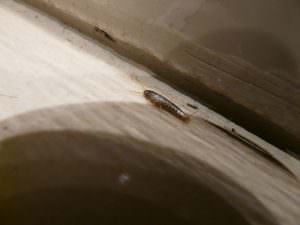
During the day, silverfish hide in tight cracks or crevices, typically in humid, moist areas. Yet, they can be found in almost anywhere in the home. Silverfish consume paper, particularly wallpaper, envelopes and book bindings.
Silverfish pose no health threat but can cause damage to your home. Over time, they will cause small holes, yellow stains, notches or etchings along the edges of infested materials.
Do not keep old magazines or books in basements, attics or garages. Keep food items such as sugar and flour in tightly sealed containers. Use a dehumidifier to reduce the humidity in your home. Eliminate or repair any wet or moldy wood and repair leaky drains and pipes.
Webbing Clothes Moths
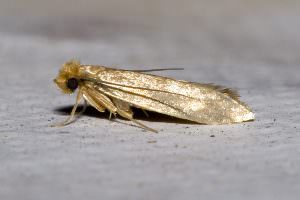
The webbing clothes moth is probably the most commonly encountered clothes moth in the United States. Webbing clothes moths do not attack materials of vegetable origin. They attack synthetic fibers only when they are interwoven with natural animal fiber materials or are soiled. They feed on keratin-containing materials such as wool, hair, fur, etc. They have been found infesting beef meal, fish meal and milk products, in addition to furs, woolens, etc.
Damage generally appears in hidden locations such as beneath collars or cuffs of clothing, in crevices of upholstered furniture, and in carpeted areas beneath furniture. Fabrics with food, perspiration, or urine stains are more subject to damage.
Periodically cleaning areas in your home that can harbor clothes moths can prevent or control infestations. These areas include seldom-cleaned spots such as beneath heavy pieces of furniture; along baseboards and in cracks where hair and debris accumulate; in closets, especially those in which woolens and furs are kept; and inside and behind heaters and inside vents. The vacuum cleaner is the best tool for most of this cleaning. After using it in infested areas, dispose of the bag's contents promptly, since it can include eggs, larvae, or adult moths.
